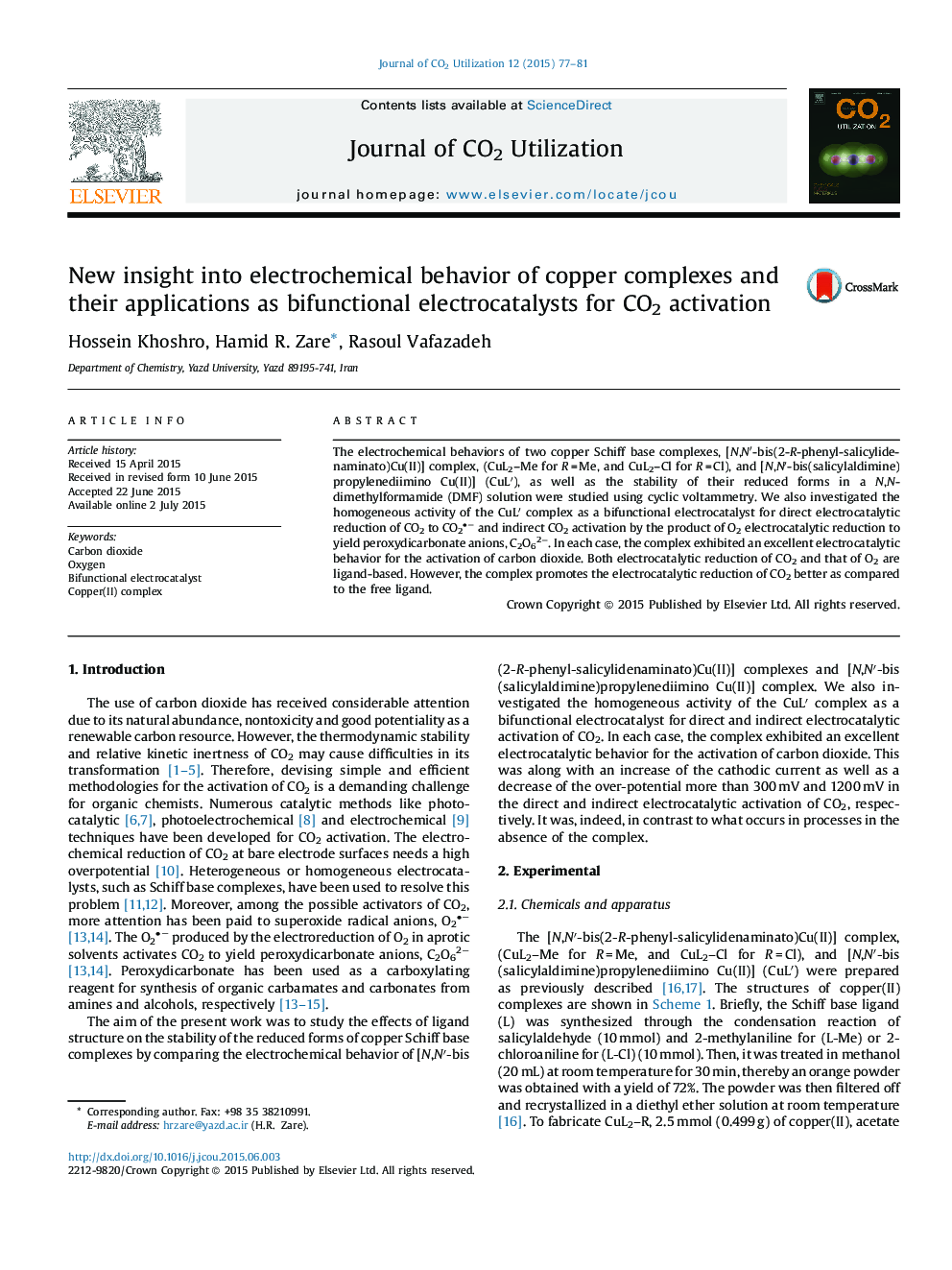| Article ID | Journal | Published Year | Pages | File Type |
|---|---|---|---|---|
| 63648 | Journal of CO2 Utilization | 2015 | 5 Pages |
•The effect of ligand structure was investigated on the stability of the reduced forms of copper Schiff base complexes.•A copper Schiff base complex was successfully used for direct and indirect electrocatalytic activation of CO2.•A mechanism was reported for the electroreduction of CO2 by a copper complex.•The complex promoted the electrocatalytic reduction of CO2 as compared to the free ligand.
The electrochemical behaviors of two copper Schiff base complexes, [N,N′-bis(2-R-phenyl-salicylidenaminato)Cu(II)] complex, (CuL2–Me for R = Me, and CuL2–Cl for R = Cl), and [N,N′-bis(salicylaldimine)propylenediimino Cu(II)] (CuL′), as well as the stability of their reduced forms in a N,N-dimethylformamide (DMF) solution were studied using cyclic voltammetry. We also investigated the homogeneous activity of the CuL′ complex as a bifunctional electrocatalyst for direct electrocatalytic reduction of CO2 to CO2− and indirect CO2 activation by the product of O2 electrocatalytic reduction to yield peroxydicarbonate anions, C2O62−. In each case, the complex exhibited an excellent electrocatalytic behavior for the activation of carbon dioxide. Both electrocatalytic reduction of CO2 and that of O2 are ligand-based. However, the complex promotes the electrocatalytic reduction of CO2 better as compared to the free ligand.
Graphical abstractFigure optionsDownload full-size imageDownload as PowerPoint slide
